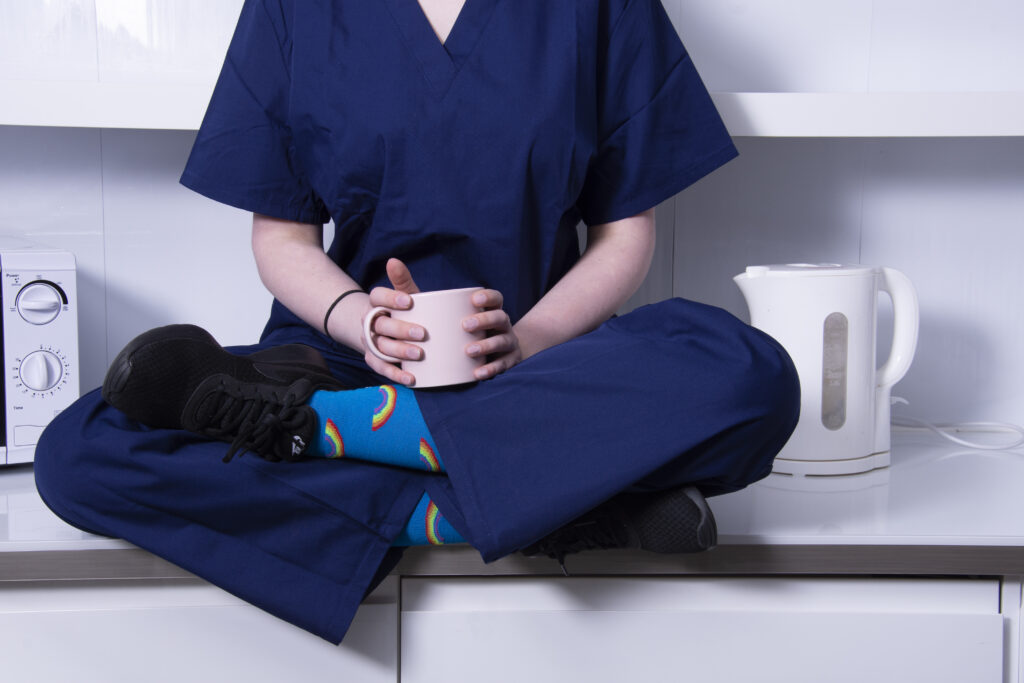Compression Socks for Nurses
Nurses and Healthcare Assistants are the unsung heroes of healthcare, providing critical care and support to patients day in and day out. Their demanding profession often requires long hours on their feet, constantly moving and attending to the needs of others. The physical toll this takes on their bodies is immense, with leg fatigue and swelling being common complaints among busy nurses.
Enter compression socks, a simple yet powerful solution that can make a significant difference in a nurse’s work life. In this blog post, we’ll explore what compression socks are, how they work, and why they are a valuable addition to a nurse’s day-to-day uniform.
What are Compression Socks for Nurses?
Compression socks, also known as compression stockings, are specially designed hosiery garments that apply graduated pressure to the legs. This means that they exert the most pressure at the ankle and gradually decrease in pressure as they move up the leg. The primary purpose of compression socks is to improve blood circulation in the legs, which can help alleviate a range of issues, particularly for those who spend long hours on their feet.
Compression socks for nurses are no different to any other FITLEGS compression stockings, such as our medical-grade or sports compression socks, except they have been designed with the right amount of compression to be worn safely and comfortably all day.
How Do Compression Socks Work?
Nurses’ compression socks work through a simple yet effective mechanism. The pressure they apply helps to:
Enhance Blood Flow: The gentle pressure promotes blood flow by assisting the veins in pushing blood back up to the heart. This prevents blood from pooling in the lower extremities.
Reduce Swelling: By preventing the accumulation of fluid in the legs, compression socks can significantly reduce swelling. This is common among nurses who spend extended periods standing or walking.
Prevent Fatigue: Improved circulation means that muscles receive a more consistent supply of oxygen and nutrients. Reducing muscle fatigue and discomfort.
The Benefits of Compression Socks for Nurses
Reduced Leg Fatigue: One of the most immediate benefits of compression socks for nurses is reduced leg fatigue. These socks provide continuous support throughout long shifts. This improved circulation and support help nurses stay on their feet without feeling as tired at the end of the day.
Improved Comfort: In addition to reducing swelling, compression socks made with the right materials are comfortable and stretchable. This can lead to an overall better work experience, without feeling pain and discomfort
Enhanced Focus: With improved blood circulation, nurses can maintain their focus and concentration, which is crucial when providing patient care.
Choosing the Right Compression Socks
When selecting compression socks for nursing, consider the following factors:
Compression Level: Compression socks come in various levels of compression, so choose one that suits the specific requirements of nursing, specifically being able to wear and move around in them all day. Generally, compression levels up to 20 mmHg are typically safe for those without risk factors.
Size and Fit: Ensure you select the correct size for a snug yet comfortable fit. Ill-fitting compression socks may not provide the desired benefits, and they may also rub and chafe against footwear from being stood up all day.
Material and Comfort: Look for socks made from stretchable, moisture-wicking materials to keep your feet dry and comfortable throughout your shift. At FITLEGS, our compression socks for nurses are made from cotton or bamboo for comfort and sustainability.
Making Compression Socks Part of Your Routine
Incorporating compression socks into your nursing routine is easy:
Wear Them Daily: Find compression socks that can be safely worn throughout the working day.
Stay Hydrated: Drinking plenty of water can help manage fluid retention in your legs.
Elevate Your Legs: When you have a break, elevate your legs to encourage fluid drainage.
Compression Socks: A Simple Solution for Hardworking Nurses
Compression socks for nurses are a small investment with potentially significant returns. By improving blood circulation, reducing leg fatigue, and preventing swelling, these socks are a valuable addition to a nurse’s uniform. The physical demands of nursing are challenging, but with compression socks, nurses can take better care of themselves and continue to provide the exceptional care that defines their profession.
So, for nurses everywhere, it’s time to step into comfort with compression socks.
